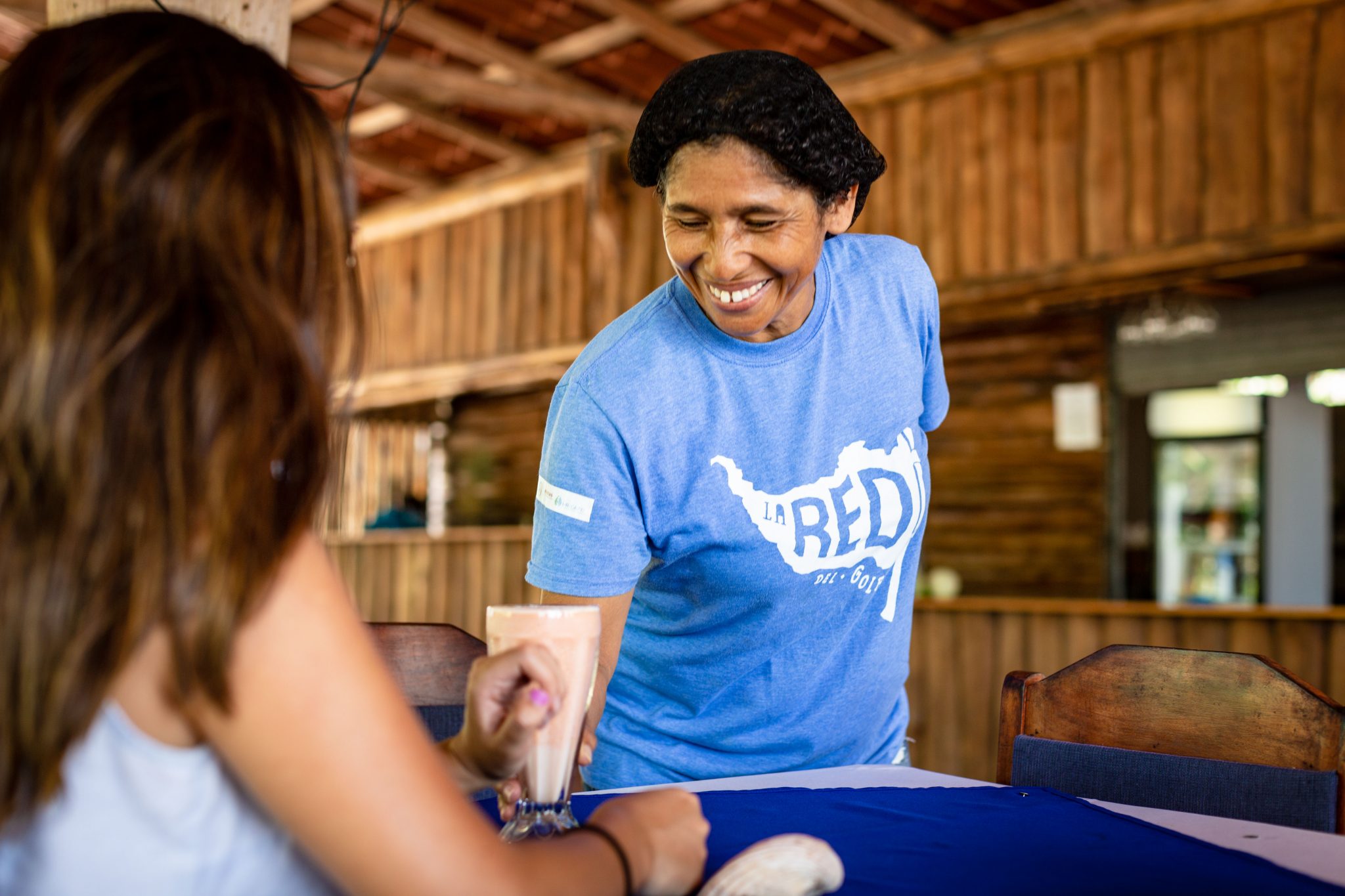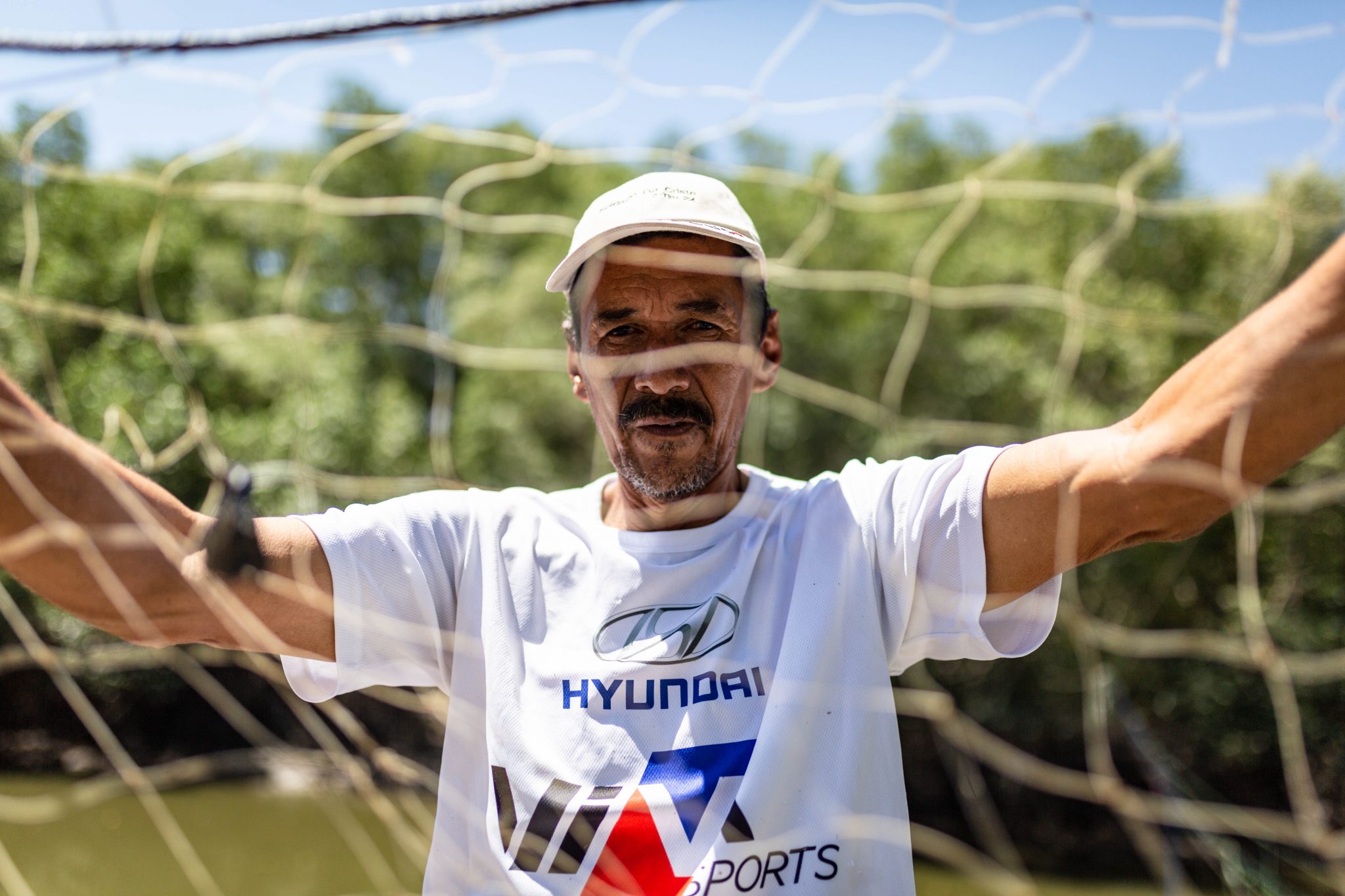
After steering through the waters of the Gulf of Nicoya for 15 minutes, Hilario Diaz points out the place where he and his Puerto Pochote fellows fish: the interior area, the most important fish breeding area in the Gulf of Nicoya.
Since he was nine years old, when his father taught him how to fish, Hilario has lived from the sea. “There are a lot of people who say they fish out of necessity, and yes, that’s part of it, but there’s also an immense affection,” he says.
But hunger and affection together do not always benefit the sustainability of the sea. Nowadays, overexploitation of the Gulf of Nicoya by illegal fishing, the number of fishermen living off the same ecosystem, lack of alternative employment and lack of respect for fishing season closures have brought nearby communities to a turning point: although fishing is what they like most in life, they know that they will have to find other jobs to survive.
There are no studies that show how much the marine resource has been reduced, but Hilario says that about nine years ago, they used to catch 60 kilos (132 pounds) of fish in a day, whereas now they only catch 15 (33 pounds) on good days. There are days when five kilos (11 pounds) is normal.
At the beginning [of the decade] in 2000 in the gulf, up to 400 tons per year were extracted. That figure, by 2009, was reduced by almost half,” says the manager of sciences for MarViva Foundation, Gustavo Arias.
Hilario and several families joined the Gulf Network (Red del Golfo, in Spanish) four years ago, an initiative of the MarViva foundation that brings together 14 fishing communities in Nicoya, Abangares, Nandayure, Cañas and Puntarenas to protect marine resources. The foundation gives them technical and financial support.
MarViva’s policy adviser for the area, Félix Fonseca, believes that just getting the communities talking is already a great achievement. But the network has already had other impacts.
The fishermen learned the importance of sticking to artisanal fishing and respecting times when fishing season is closed. They even proposed a responsible fishing area with the National University and, in 2017, some fishermen told this newspaper that respecting the closure helped them to have larger catches in the following months.
They have also cleaned beaches, they write news about the problems that happen in their communities to work together to solve them, and they receive training from state entities. But so far, nothing has been enough to save the gulf.
Solutions on the Way
Fifteen minutes from Puerto Pochote, in the district of Quebrada Honda in the canton of Nicoya, one of Hilario’s daughters, Gloria Diaz, and three other women prepare breakfast at El Pescador Restaurant.

Mirna Medina, from the community of Copal, is one of the members of the Gulf Network who works in the new restaurant El Pescador. Photo: Cesar Arroyo
The business is part of Coopesergoni, a cooperative that the network created to employ members and give them productive options other than fishing, such as business and tourism. In addition, according to Félix Fonseca, the coop will have a space in the next Chorotega Regional Market for selling seafood.
The Network has been renting the restaurant since December and they hope to buy it soon. They equipped it with money they collected from bingos, soccer tournaments, karaokes, motocross and food sales.
One of the women is the president of the network, Auxiliadora Diaz. When asked what they have achieved in these four years, she answers, “empowerment.” “Now we think that we can achieve things that we propose to get ahead,” she says.
We come from fishing families that think that only the sea can give to us, and with this [the restaurant], now we are going to get involved in something different,” Cindy Garcia, secretary of the Network, also says.
They also think about venturing into tourism. They visited several attractions of the gulf and other Guanacaste communities to put together tours. One of them includes visiting Barra Honda National Park, boating on the gulf and ending up at San Buenaventura de Abangares to learn about the process of extracting salt. Other tours include sport fishing, horseback riding, and visits to islands and waterfalls.
“When the majority of Costa Ricans cross the bridge over the Tempisque River, they go to the beaches of northern Guanacaste. Few know about the beauty that exists here, and our cooperative wants to take advantage of it touristically,” they relate in a video that MarViva made about the cooperative.
The community will start the project during the second half of 2019, when the consultant finishes putting together the business model. “With this, we hope to help some 120 people economically and indirectly,” says Gutierrez.
All Aboard?
Not everyone has joined forces with the network solutions. In our tour of the interior, Hilario pointed out to us fishermen with nets in places where fishing should only be done with fishing line. And back in Puerto Pochote, we also talked with fishermen who are not so convinced of what their neighbors are doing.
The president of the Puerto Pochote Fishermen’s Association, Rolando Ramirez, said he practices responsible fishing but is not part of the Gulf Network. In fact, he is skeptical about whether communities can achieve something on their own. “We can talk about a lot of things, but it’s better to go to the top,” he said.
Top him, the fishermen have to put pressure on the legislators and the government to give them solutions such as access to funds for climate change and a clear protocol on how Coast Guard authorities should act with illegal fishermen.
Costa Rica has not been successful in its public fishing policy. Achieving agreements between the fishing sector and environmentalists on “trawling” (with illegal nets) even became the subject of a political campaign.
The Gulf is not the only thing that suffers from undue exploitation, and that is why MarViva believes that it can be an example for other coastal communities in the country to organize like them and look for alternatives. “It’s a pilot plan that can be taken to other communities,” says Gutiérrez.
Despite all the obstacles, the Gulf Network continues to meet to turn around business for the Gulf to save it from the agony that anglers see with anguish, when they share videos of some illegally using nets that drag everything.
If these irresponsible forms of fishing continue to be used, we are going to finish off the gulf completely. I give it 10 more years, if that, “says Carlos Rivas, one of the fishermen.
At his side, Hilario says that if the new tourism project works for them, he will get a bigger panga (fishing boat) and live off of tourism. “I have an affection and attachment to fishing, and when I don’t go, I miss it, but what is happening hurts.”





Comments